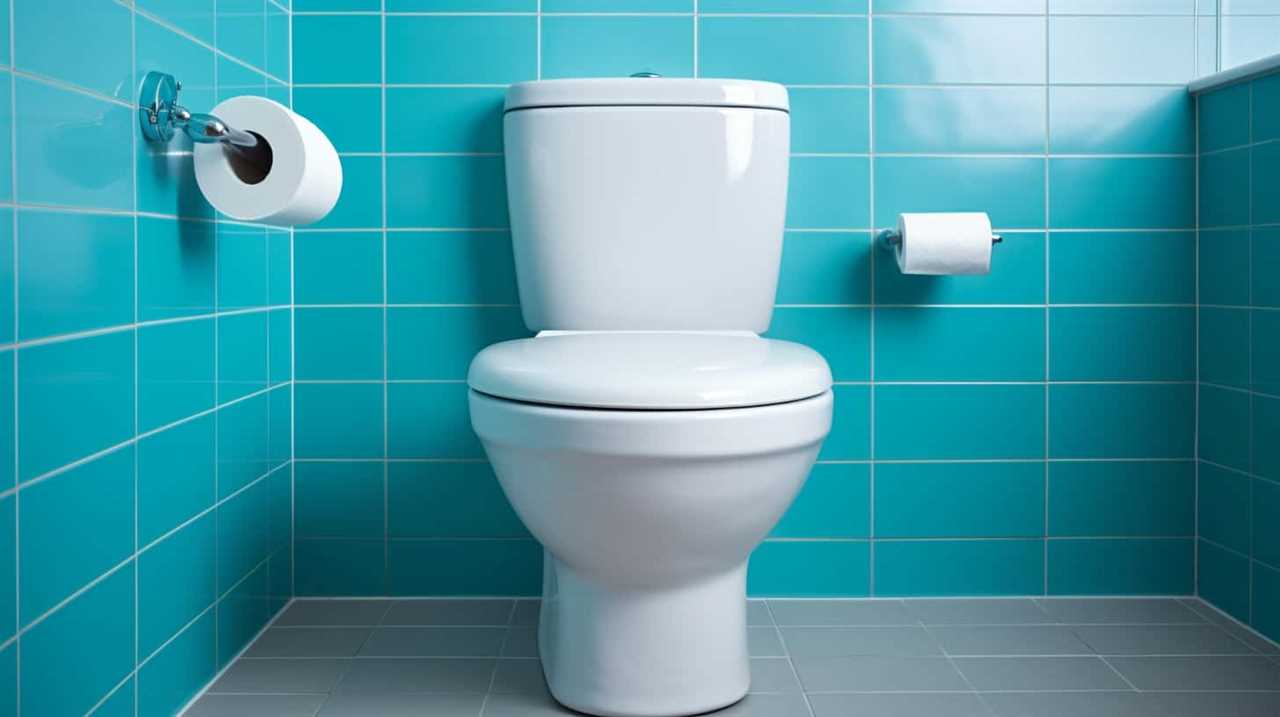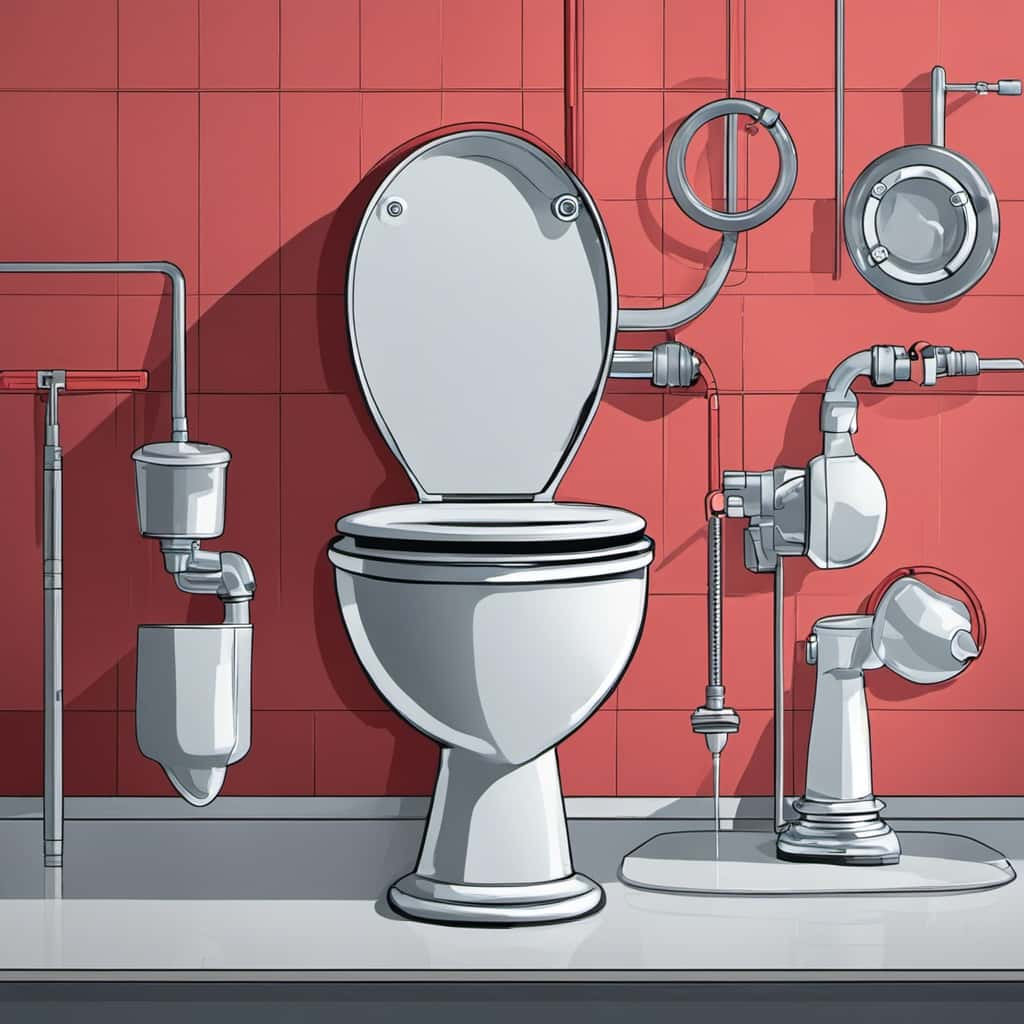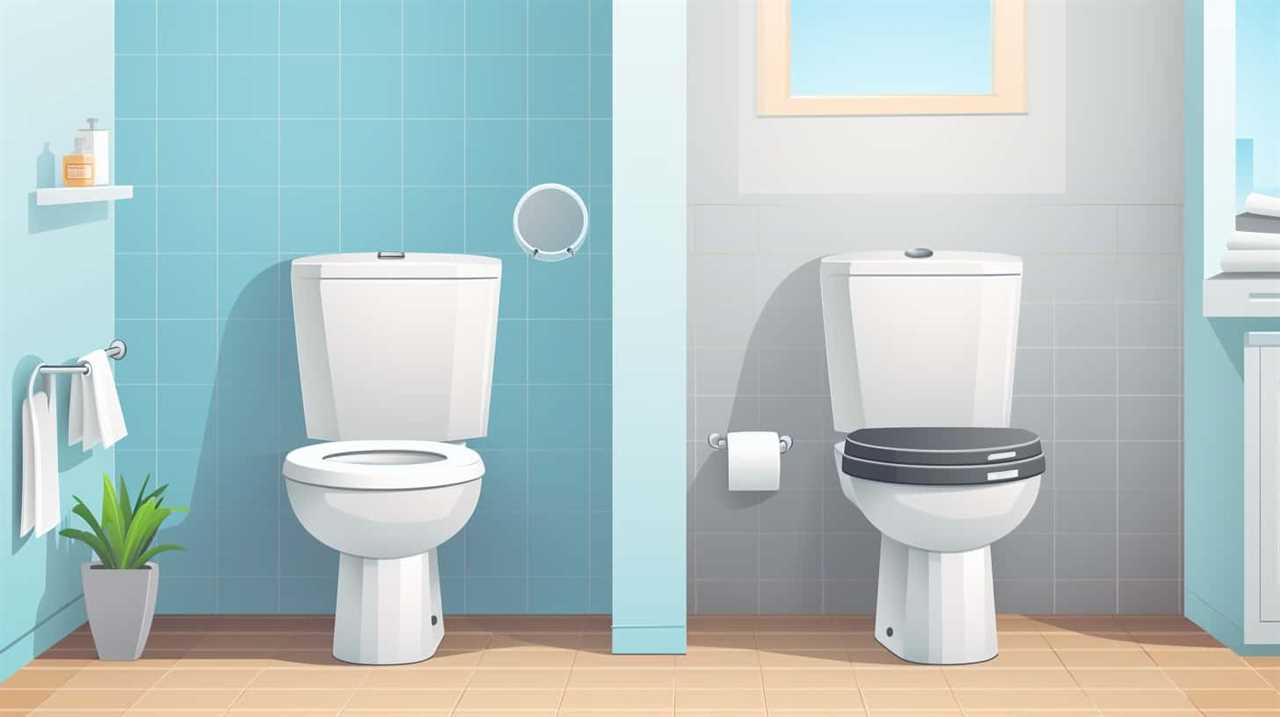Have you ever found yourself powerless in the face of a toilet that refused to flush? We comprehend the irritation and the immediate need for a resolution.
In this article, we will delve into the common reasons behind a running toilet that refuses to flush. From a faulty flapper to a clogged drain, we’ll explore the technical issues that might be causing this inconvenience.
Get ready to master the art of troubleshooting your toilet and regain control over your bathroom!
Key Takeaways
- A faulty flapper is a common reason for a running toilet that won’t flush. It needs to be replaced to resolve the issue.
- Adjusting the water level in the toilet tank is essential for proper flushing. It can be adjusted by turning a screw or adjusting the float arm.
- A clogged drain can cause a running toilet that won’t flush. It can be resolved by using a toilet plunger or plumbing snake to remove the blockage.
- A broken flush valve or malfunctioning fill valve can also prevent the toilet from flushing properly. Consult a professional for repair or replacement if necessary.
Faulty Flapper
We often find that a faulty flapper is the most common reason why our toilets run but won’t flush.

The flapper is a rubber mechanism that sits at the bottom of the toilet tank and controls the flow of water into the bowl.
When the flapper isn’t functioning properly, it may not create a tight seal, allowing water to continuously flow from the tank into the bowl.
This constant flow of water can cause the toilet to run but not flush properly. To fix this issue, a simple toilet repair is needed.
By replacing the faulty flapper with a new one, the problem can be resolved.
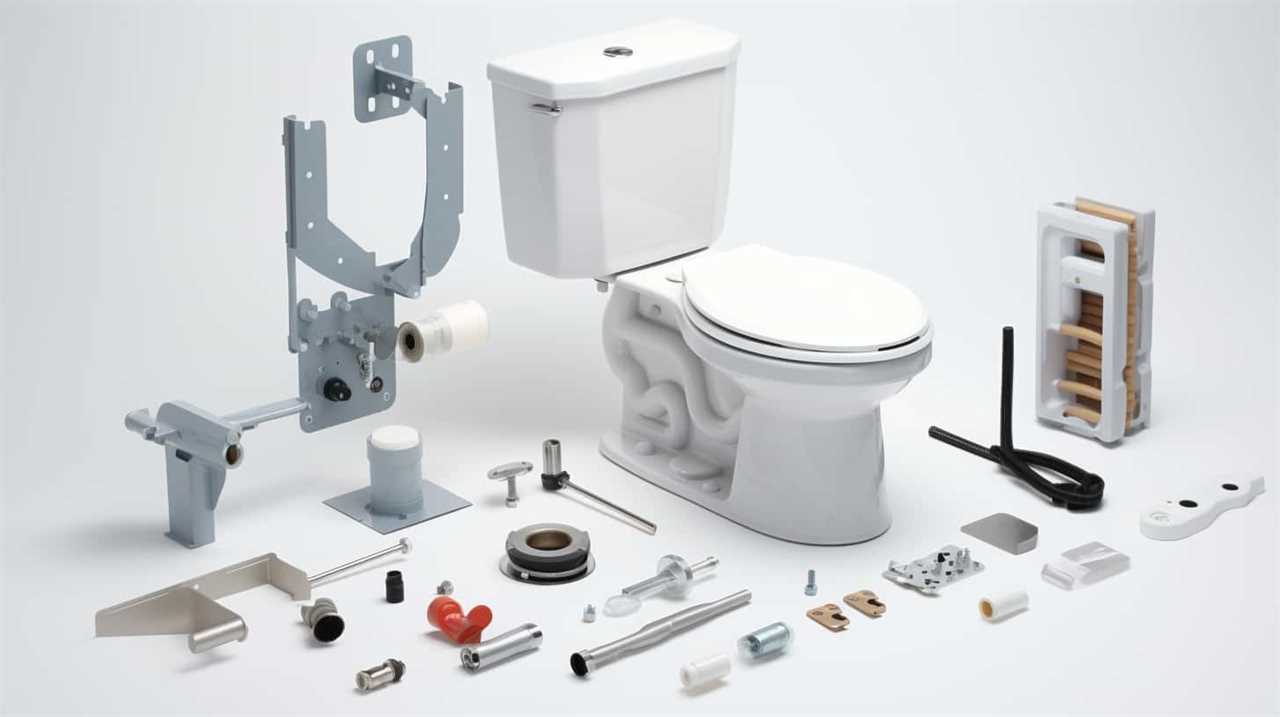
Moving on to the next section, let’s discuss the importance of water level adjustment in resolving toilet plumbing issues.
Water Level Adjustment
To ensure proper flushing, adjusting the water level in the toilet tank is essential. Here are four toilet maintenance tips for adjusting the water level:
- Locate the water level adjustment screw or float arm: In most toilets, the water level can be adjusted by turning a screw or adjusting the float arm. This is usually located on the fill valve.
- Turn the screw or adjust the float arm: If the water level is too low, turn the screw clockwise to increase the water level. If the water level is too high, turn the screw counterclockwise to decrease the water level. Alternatively, adjust the float arm to achieve the desired water level.
- Test the flush: After making the adjustment, flush the toilet to ensure that the water level is now at the correct height. The flush should be strong and efficient.
- Fine-tune if necessary: If the flush is still not optimal, make further adjustments to the water level until the desired flush is achieved.
Clogged Drain
After adjusting the water level in the toilet, the next potential cause for a running toilet that won’t flush is a clogged drain. A clogged drain occurs when there is an obstruction in the pipes that prevents water and waste from flowing freely. This can lead to a toilet overflow, causing water to spill onto the bathroom floor. To identify and resolve a clogged drain, it is important to understand the common signs and solutions. The following table provides a visual representation of the signs, causes, and possible solutions for a clogged drain in a toilet.
| Sign | Cause | Possible Solution |
|---|---|---|
| Toilet won’t flush | Blockage in drain pipe | Use a toilet plunger to dislodge the obstruction |
| Slow draining | Accumulation of debris | Use a plumbing snake to remove the blockage |
| Gurgling noises | Air trapped in the pipes | Call a professional plumber to inspect and repair the pipes |
| Water backup | Main sewer line clog | Contact a plumber to clear the main sewer line |
If the above solutions do not resolve the issue, it is recommended to seek the assistance of a professional plumber experienced in toilet repair to diagnose and fix the problem effectively.

Broken Flush Valve
Once we’ve ruled out a clogged drain as the cause of a running toilet that won’t flush, we can now explore the possibility of a broken flush valve. A broken flush valve can prevent the toilet from flushing properly and may need to be repaired or replaced.
Here are four troubleshooting tips to determine if the flush valve is indeed broken:
- Check for water leakage: Inspect the area around the flush valve for any signs of water leakage. This could indicate a crack or break in the valve.
- Test the flush handle: Try flushing the toilet and observe if the flush handle feels loose or if it doesn’t engage properly. This could indicate a problem with the flush valve mechanism.
- Look for water level issues: If the water level in the toilet tank is consistently low or high, it could be a sign of a faulty flush valve.
- Listen for unusual sounds: A broken flush valve may cause gurgling or hissing sounds when the toilet is flushed.
If any of these issues are present, it’s recommended to consult a professional for toilet repair or replacement of the flush valve.
Malfunctioning Fill Valve
After ruling out a broken flush valve, the next possible cause of a running toilet that won’t flush is a malfunctioning fill valve. The fill valve is responsible for refilling the toilet tank after each flush. If it malfunctions, it can result in various refill issues, such as continuous running or inadequate water supply. To troubleshoot fill valve problems, consider the following:

| Fill Valve Troubleshooting | ||
|---|---|---|
| Symptom | Possible Cause | Solution |
| ————————— | ————————– | —————————– |
| Continuous running | Faulty fill valve | Replace or repair the valve |
| Inadequate refill | Low water pressure | Check water supply |
| Partially closed valve | Adjust or replace the valve | |
| Clogged valve | Clean or replace the valve |
Frequently Asked Questions
How Do I Fix a Toilet That Won’t Flush but Has a Faulty Flapper?
To fix a toilet that won’t flush due to a faulty flapper, we need to replace the flapper. This will solve the issue of the toilet not flushing properly and stop it from running unnecessarily.
What Are the Signs That My Toilet’s Water Level Needs Adjustment?
When adjusting the water level in our toilet, we look for signs like inadequate flushing power or constant running. It’s crucial to maintain the appropriate water level to ensure proper functionality and prevent any issues.
How Can I Tell if My Toilet Has a Clogged Drain and What Can I Do to Fix It?
To determine if a toilet has a clogged drain, check for signs of toilet bowl overflow. If clogged, use effective toilet plunger techniques to fix it.
What Are the Common Symptoms of a Broken Flush Valve in a Toilet?
When troubleshooting toilet issues, we must consider the symptoms of a broken flush valve. One common symptom is a toilet that keeps running but won’t flush, indicating a malfunction in the toilet flush mechanism.
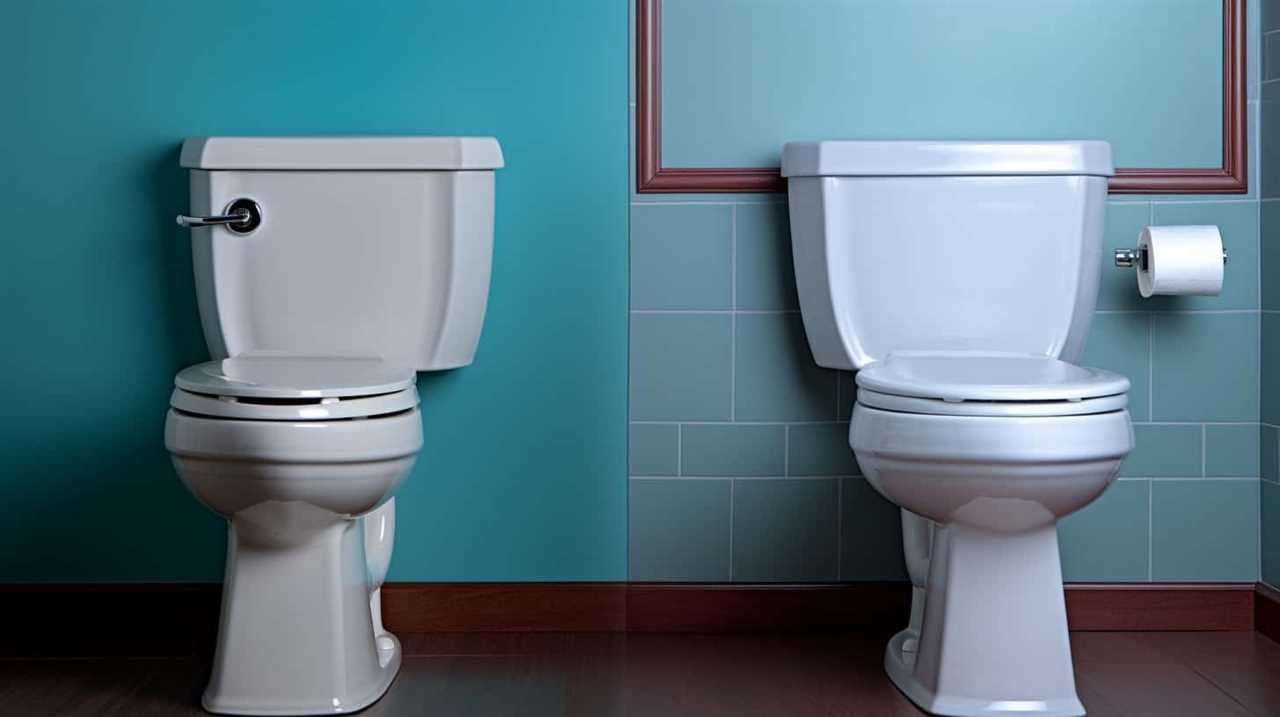
How Do I Troubleshoot a Malfunctioning Fill Valve in My Toilet?
To troubleshoot a malfunctioning fill valve in our toilet, we can start by checking for any blockages or sediment in the valve. If necessary, we may need to perform a toilet fill valve replacement.
Conclusion
In conclusion, a running toilet that won’t flush can be caused by several common issues. These include a faulty flapper, water level adjustment, clogged drain, broken flush valve, or malfunctioning fill valve.
By addressing these problems, you can resolve the issue and ensure your toilet functions properly.
So, next time you hear your toilet running but it won’t flush, don’t panic, just check these potential causes and fix them to get your toilet back in working order.

